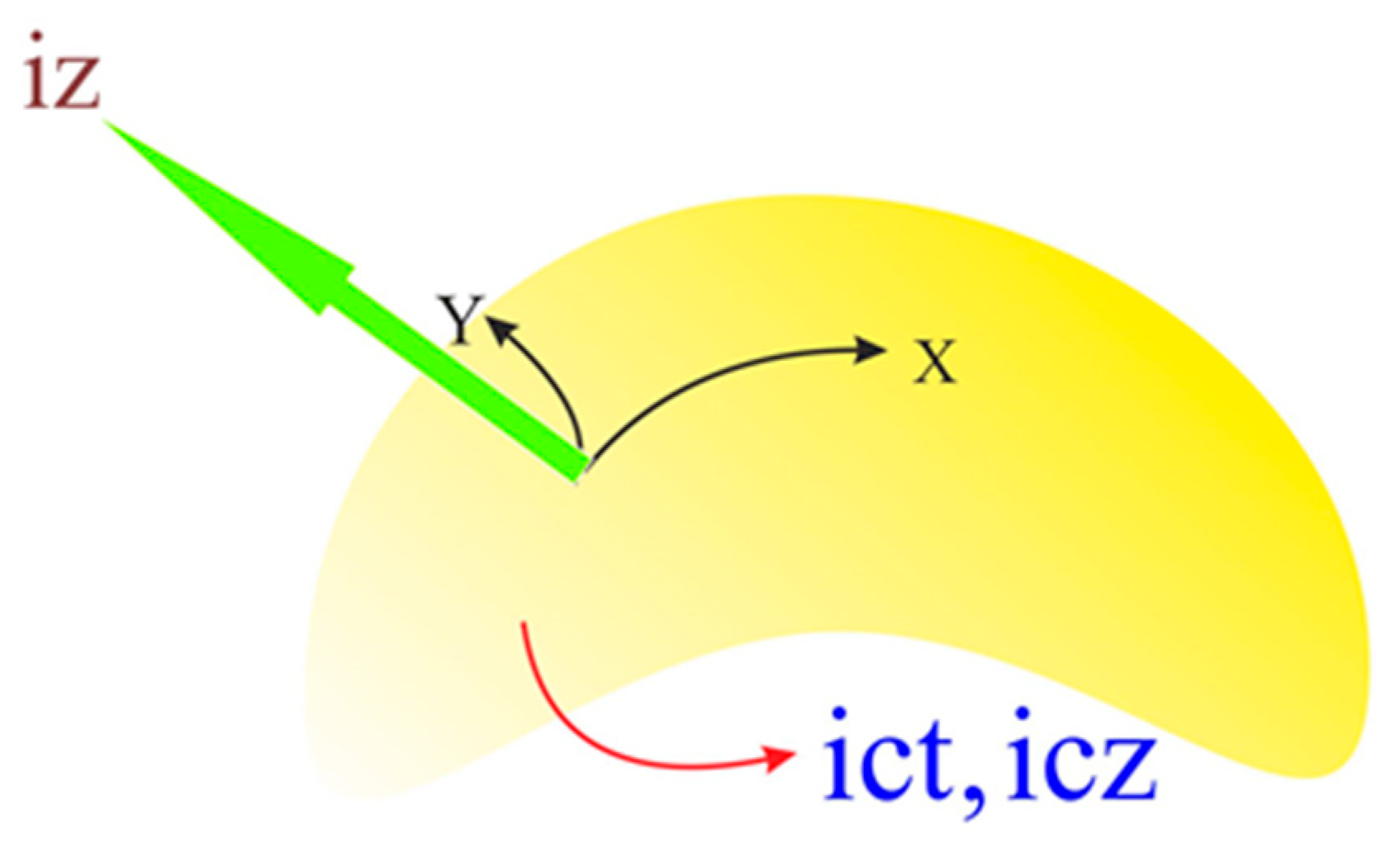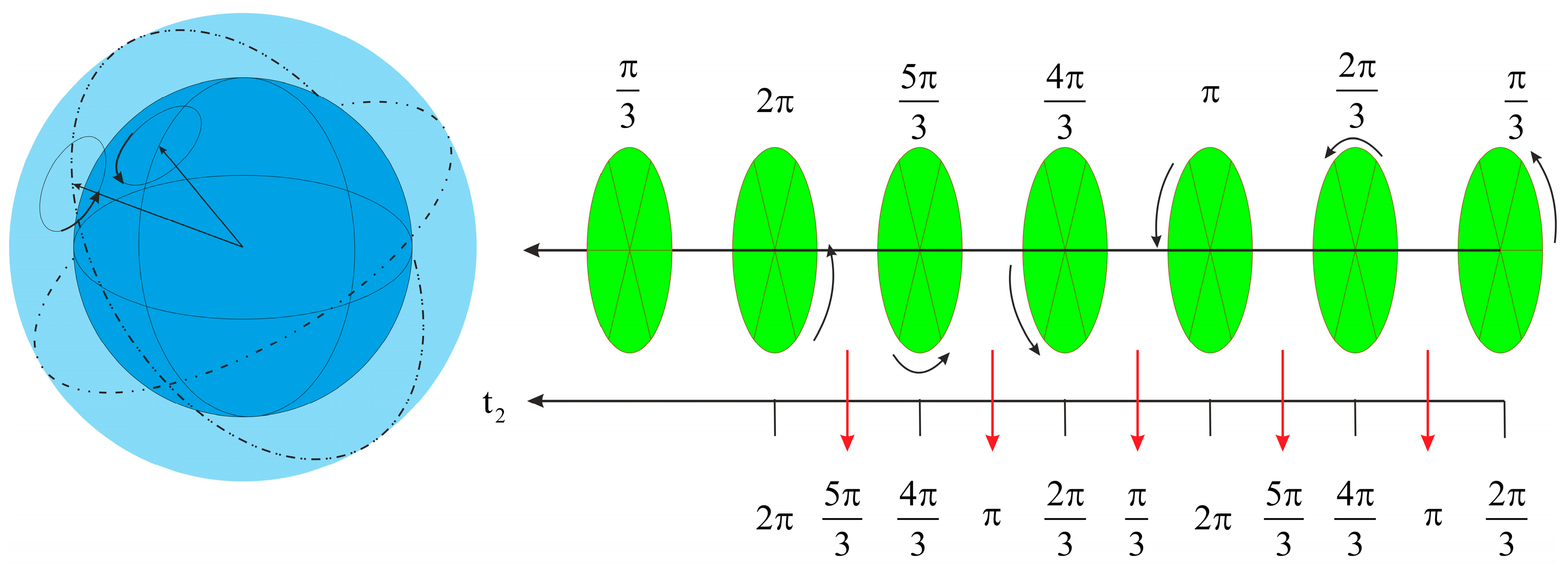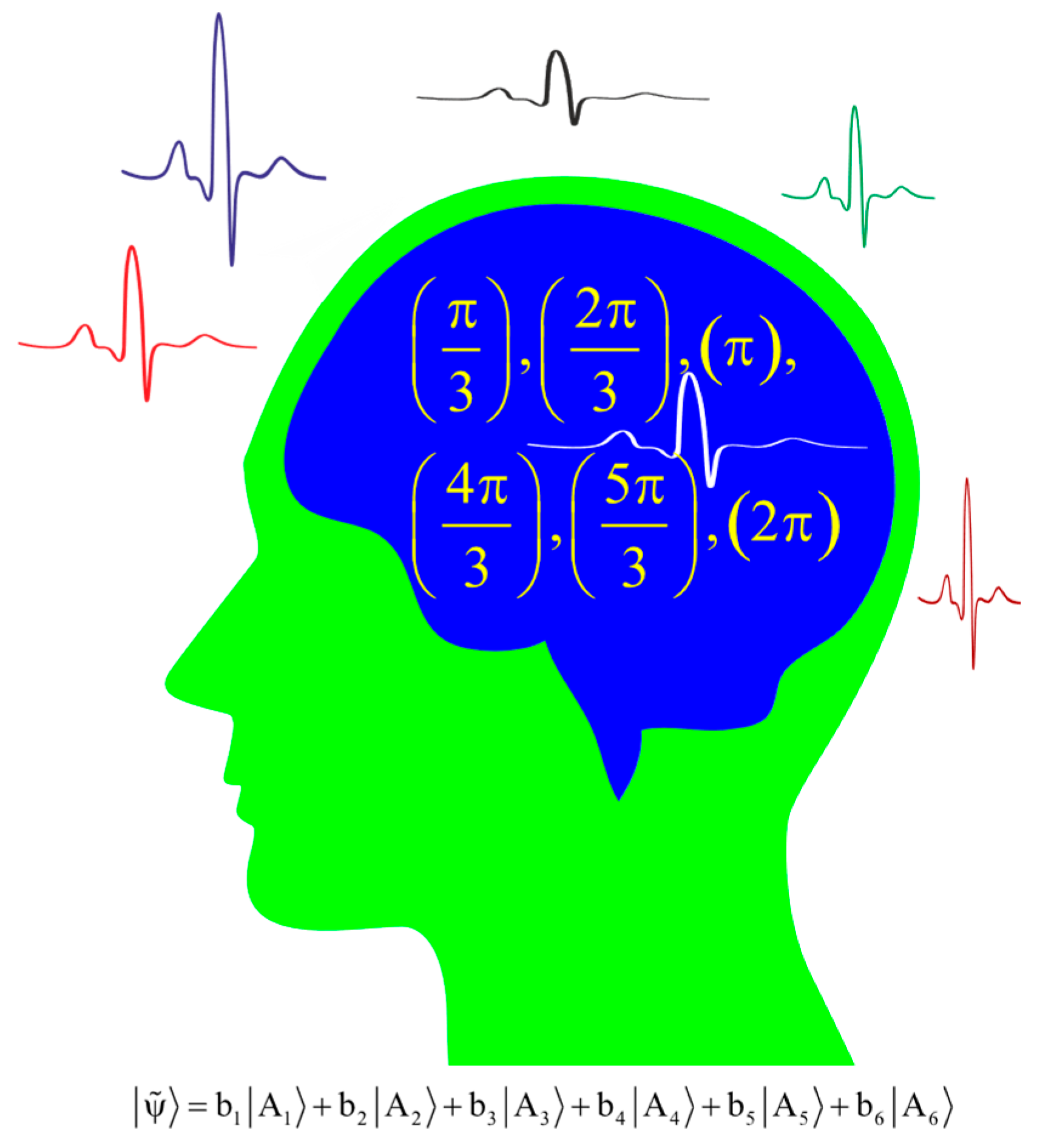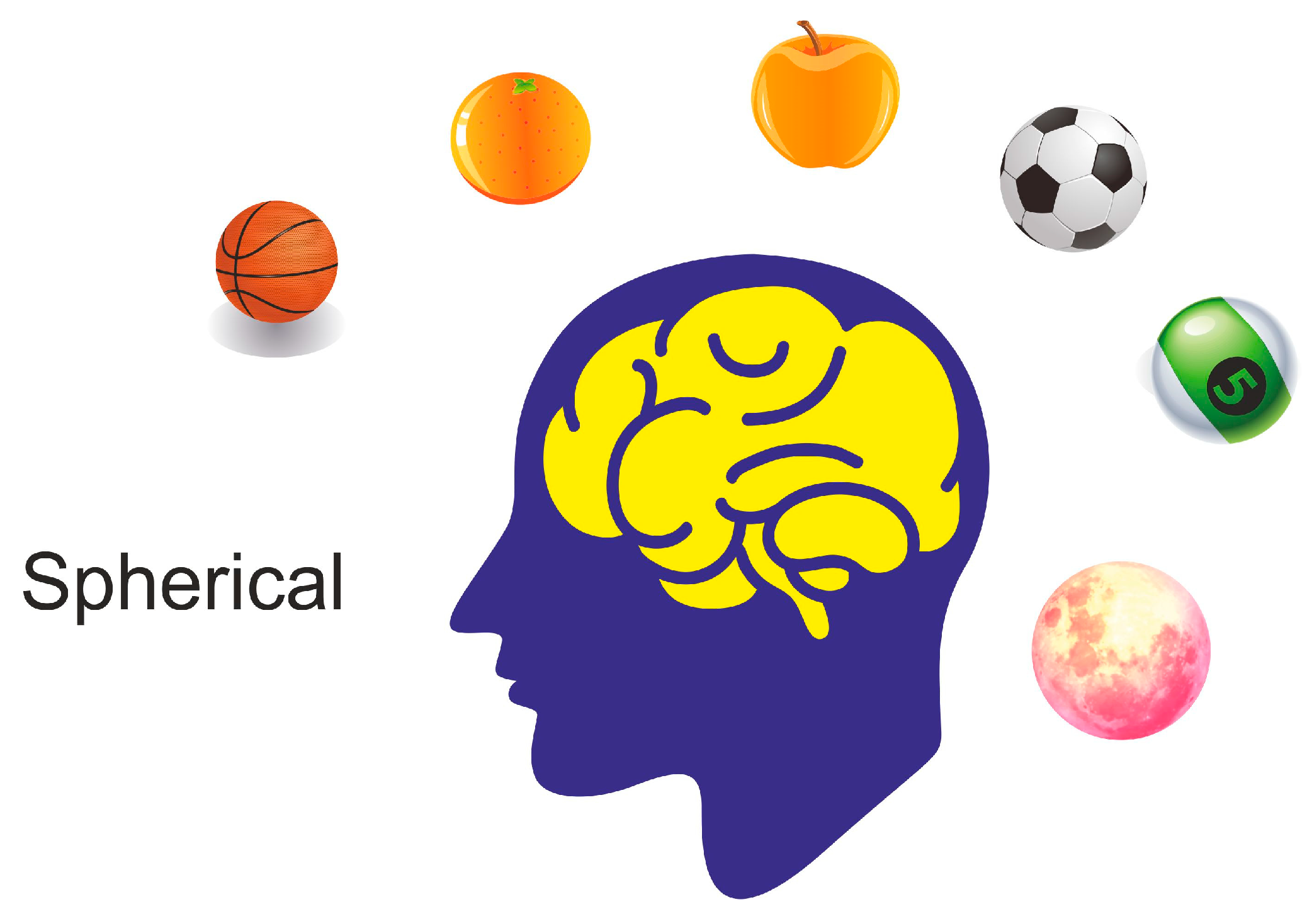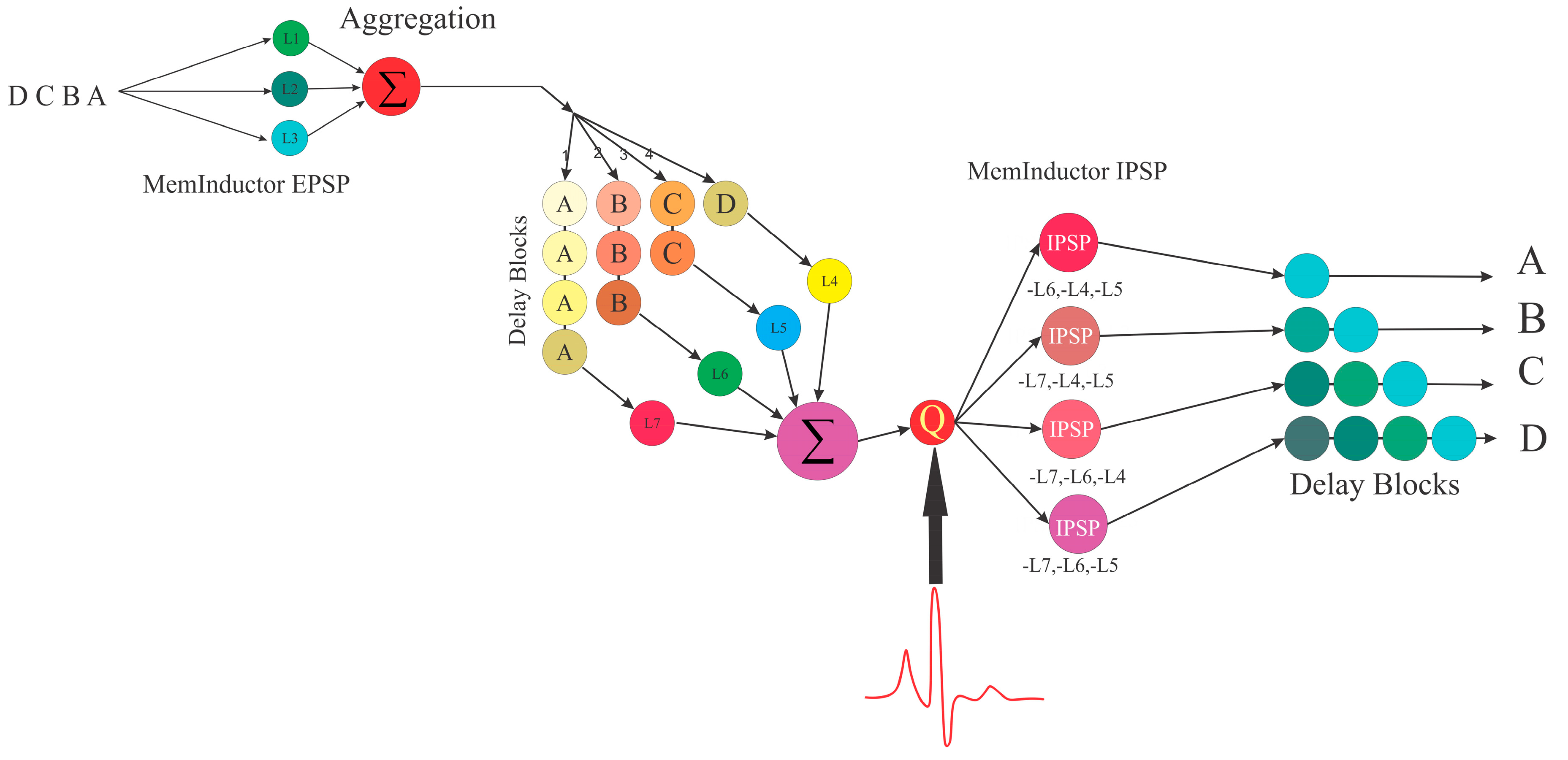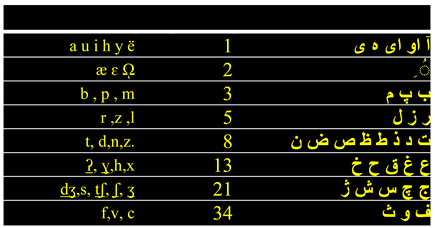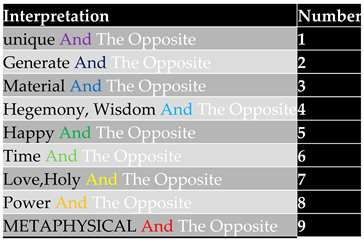1. Introduction
self-awareness is one of the matters that has been considered by neurologists for many years. Some animals have levels of self-awareness and consciousness [
1,
2,
3]. In the MSR Test designed by “Gordon Gallup Jr.” a deep relationship was shown between consciousness, self-awareness and related memories. Mental damage and memory can affect self-awareness quality [
4,
5]. The origin of human consciousness is from his awareness of location over time and recalling the memories can be related to consciousness levels. remembering memories has a direct relationship with consciousness. Activating past memories, and integrating information in the brain are directly related to self-consciousness [
6,
7]. relationship of self-awareness and memory is fully known in Alzheimer's disease [
8,
9,
10]. Perception of time by the brain is a very complex issue. The brain does not store time in memory and sometimes saves a lengthy memory in separate and short events [
11]. The human brain saves concepts instead of general information. Consequently, remembrance of memories has a deep conceptual relationship with new events [
12]. Man's memory has a deep relationship with speech and language[
13,
14]. Integration of information in the brain makes access to the related information faster [
15,
16].
Predictive coding of auditory information is a natural process in the human brain [
17]. Many brain activities have been simulated in modern neural networks. Simulation of the relationship between memory and feelings, and also sensory neural networks express the possibility designing of artificial consciousness[
18,
19].
In this study, a different pattern was designed based on the six-dimensional space-time theory [
20,
21], and the brain function as well as data transfer based on brain entanglement [
22].
2. Time
Dimension 'z' is imaginary from the perspective of two- dimensional creatures on the surface of a ball that is expanding, and they experience dimension 'z' in the direction of the " time " dimension. Each motion on the surface of a two- dimensional sphere is evaluated in proportion to the 'z' axis.
Figure 1
In fact, the human brain investigates environmental changes, and it creates comprehension and imagination of time due to its activity on the basis of related memories. Each event has a wave function in space and time; the human brain saves the changes related to each object's wave function in memory.
On the basis of the six-dimensional time-space theory [
22], the wave function has been built on repetitive moods in space–time depending on the object density. (2.1)
Figure 2. Thus, the brain predicts other states of an event during the 'REM' sleep, and it recalls them from memory. This is due to the because of the categorization of daily information during sleep.
The changes related to the wave function of each event are saved and integrated into the short-term memory in the form of a compressed pulse. during classification, similar information is recalled from long-term memory with regard to the type and place of pulse saving. Most of the time, the brain decides to delete similar information, such as the machine's horns voice etc... but at special times, information is saved. Information saving depends on man's thought. For example, when you are thinking deeply and the voice of a crow attracts your attention, then the brain saves that memory; whereas, if it doesn’t attract your attention, then you haven't any memory of the crow's voice that day.
The brain can predict future states of wave function for several related events.
Figure 3 . Sometimes prediction of the future is observed with imaginary and non-significant images in sleep. On the basis of Freud's Dream Interpretation [
23], sleep interpretation varies for every individual. For example, chocolate is 'bad' in one's culture, and its observation in sleep can express the occurrence of an unpleasant event in future. As a result of recalling similar information from memory, the brain simulates images of future events.
3. Memory
Activity The brain is on the basis of related memories. When it hears a word like "sphere", it recalls the whole objects related to the sphere from memory.
Figure 4. Or when it hears a person's name, it recalls the whole individual with that name from memory. Then if it hears the person's family name as well, and if the person is known for it, the whole of characteristics are recalled for that person.
Details are not stored in memory. This issue indicates that information is stored in memory in a compressed form.
4. Methods
For each object with all of its details, only a compressed pulse is saved in the brain and while remembrance, we don’t remember many details of it.
On the basis of compressing information during Spike current [
24], the saved information holds the main details, and a special part encodes each detail. The section related to its volume has separate memories for the types of volume. Each part is compressed on a pulse after recognition; while recalling by the memory, the pulse is dispatched to every section. Each section recalls similar pulse memory separately. For example, after hearing the word "spherical", you simultaneously recall spherical volume, tenderness of a spherical object and the whole spherical object from memory. In this method, there is only one pulse against each object and a particular network of IPSP inhibitory neurons decodes this pulse.
Figure 5
animals in most species communicate with their parents in the same way when they are born. A compressed sound pulse that is recognized and decoded only by the same species.
Figure 6
5. Compressing speech in humans:
With regard to the deep relationship of speech with thoughts in the brain, the speech numerical method was used for processing information.
Speech is made of various syllables. Syllables are made of consonants and vowels. The human infant learns consonants and vowels based on the difficulty of pronunciation and learns simpler syllables earlier.
On the basis of fractal structure dependent on the golden constant in the neural network, letters are encoded with a Fibonacci sequence.
Table 1
The semantic relationship of synonym words is specified by aggregation and evolution of numbers. In such a manner that aggregation and evolution of numbers related to various words are grouped in one framework. (5.1). According to the mirror work in music and art [
25], as well as the symmetrical structure of the neural network in the brain and the semantic interpretation of information [
26], numbers are coded and interpreted.

Consequently, a unique meaning can be regarded for numbers the Concentration intensity of that meaning varies in Different numbers.
Table 2
Semantically, the words are grouped with various Concentration intensities of meanings.
6. Discussion and results
Related memories in memory play an essential role in logic, self-awareness and thinking although the passage of time is not stored in memory, events are classified based on date and time in memory.
Consciousness of before and after during time is the zero and one logic of humans for thinking. As a result, consciousness has a deep dependence on knowing the present time and self-consciousness is the result of thinking in the context of consciousness. As a result, if we base information processing on information processing over time, we can create levels of artificial consciousness for a machine.
Basically, switching on and off in digital systems cannot create a meaningful connection between information units. However, at higher levels of information processing, artificial intelligence is able to distinguish similar patterns from each other. Artificial intelligence does not think because thinking depends on the awareness of time. Awareness is the comparison of information stored over time. But the important point is that consciousness is formed outside of time And self-awareness has been expanded in space-time like a wave function in quantum mechanics. The reason for the existence of self-awareness is that the passage of time is not stored in the brain. Although we may sing a piece of music, with recall from memory with precise timing. But the all piece of music is completely recalled from memory and we can think of the last melodies of the piece when we sing the beginning. Symmetry exists not only in the structure of neurons but also plays a fundamental role in information processing. As a result, in the algorithm designed for artificial neural networks, creating symmetry in information processing can be an effective step in improving the semantic comparison between information units.Thinking and sleep are both the result of comparing Predictions over time.Predictive processing, based on the states of an event's wave function (compressed information from an event in a spike pulse) by a neural network, can be the basis for a neural network to start thinking and sleeping.
As a result of the discussion, the designed model is implemented from the point of view of the semantic interpretation of numbers and words for the network.
Each word is saved with a meaning in network memory. Different specifications for the meaning of each word such as colour, volume, application and,...are encoded separately in the spike main current. while recalling information, a set of inhibitory IPSP neurons, which are similar to excitatory EPSP neurons of the encoder, are responsible for decoding the information.
More complex details like frequency, and relationship with other senses of artificial neural networks such as touching,.. can be related to the integration of information. Artificial sleep for ANN is a predictable procedure for processing and classifying information. Artificial consciousness has resulted from the general and complex process of information and facts in the during of time and also the semantic relationship of information in memory with other existing components.Therefore, consciousness is awareness concerning attendance in time and place.
Awareness and will are the two factors dependent on each other. Free will results from consciousness and the authority to have machines with consciousness is an unavoidable affair. Designing a neural network based on the presented method in this paper can be an effective step for producing consciousness in machines with artificial intelligence. as well as more complex patterns of words and numbers can be effective for this method.
Acknowledgements
The author expresses gratitude to Dr.Masoud taheri and Dr.Javad Nematolahi and Dr.Lh.R and E.t.S.Sattar their professors for their helpful discussions and valuable comments.
References
- Lei, Y. (2023). Sociality and self-awareness in animals. Frontiers in Psychology, 13, 1065638. [CrossRef]
- Lage, Caio A., De Wet Wolmarans, and Daniel C. Mograbi. "An evolutionary view of self-awareness." Behavioural Processes 194 (2022): 104543. [CrossRef]
- Birch, J., Schnell, A. K., & Clayton, N. S. (2020). Dimensions of animal consciousness. Trends in cognitive sciences, 24(10), 789-801. [CrossRef]
- Wales, L. (2023). Conceptual framework of the recovery of consciousness following a severe traumatic brain injury in childhood. Brain Injury, 37(7), 655-661. [CrossRef]
- Thaler, A. (2023). Disturbances of primary integration, subjective awareness, and objective self-awareness. Psychoanalytic Psychology, 40(1), 14. [CrossRef]
- Bird, C. M. (2020). How do we remember events?. Current Opinion in Behavioral Sciences, 32, 120-125. [CrossRef]
- Zheng, J., Schjetnan, A. G., Yebra, M., Gomes, B. A., Mosher, C. P., Kalia, S. K., .. & Rutishauser, U. (2022). Neurons detect cognitive boundaries to structure episodic memories in humans. Nature neuroscience, 25(3), 358-368. [CrossRef]
- Clare, L. (2003). Managing threats to self: awareness in early stage Alzheimer's disease. Social science & medicine, 57(6), 1017-1029. [CrossRef]
- Zamboni, G., Drazich, E., McCulloch, E., Filippini, N., Mackay, C. E., Jenkinson, M., .. & Wilcock, G. K. (2013). Neuroanatomy of impaired self-awareness in Alzheimer's disease and mild cognitive impairment. Cortex, 49(3), 668-678. [CrossRef]
- Mimmack, K. J., Gagliardi, G. P., Marshall, G. A., Vannini, P., Weiner, M. W., Toga, A. W., .. & Alzheimer’s Disease Neuroimaging Initiative. (2023). Measurement of Dimensions of self-awareness of Memory Function and Their Association With Clinical Progression in Cognitively Normal Older Adults. JAMA Network Open, 6(4), e239964-e239964. https://doi:10.1001/jamanetworkopen.2023.9964.
- Zheng, J., Schjetnan, A. G., Yebra, M., Gomes, B. A., Mosher, C. P., Kalia, S. K., .. & Rutishauser, U. (2022). Neurons detect cognitive boundaries to structure episodic memories in humans. Nature neuroscience, 25(3), 358-368. [CrossRef]
- Hahamy, A., Dubossarsky, H., & Behrens, T. E. (2023). The human brain reactivates context-specific past information at event boundaries of naturalistic experiences. Nature neuroscience, 1-10. [CrossRef]
- Marian, V., & Kaushanskaya, M. (2007). Language context guides memory content. Psychonomic Bulletin & Review, 14, 925-933. [CrossRef]
- Martinez-Lincoln, A., Fotidzis, T. S., Cutting, L. E., Price, G. R., & Barquero, L. A. (2023). Examination of common and unique brain regions for atypical reading and math: a meta-analysis. Cerebral Cortex, 33(11), 6959-6989. [CrossRef]
- Aboud, K. S., Nguyen, T. Q., Del Tufo, S. N., Chang, C., Zald, D. H., Key, A. P., .. & Cutting, L. E. (2023). Rapid interactions of widespread brain networks characterize semantic cognition. Journal of Neuroscience, 43(1), 142-154. [CrossRef]
- Toker, D., & Sommer, F. T. (2019). Information integration in large brain networks. PLoS computational biology, 15(2), e1006807. [CrossRef]
- Caucheteux, C., Gramfort, A., & King, J. R. (2023). Evidence of a predictive coding hierarchy in the human brain listening to speech. Nature human behaviour, 7(3), 430-441. [CrossRef]
- Wang, C., Xu, C., Sun, J., & Deng, Q. (2023). A memristor-based associative memory neural network circuit with emotion effect. Neural Computing and Applications, 1-16. [CrossRef]
- Wang, Y., Sun, J., Wang, Y., & Liu, P. (2023). Multimodal Mood Consistency and Mood Dependency Neural Network Circuit Based on Memristors. Electronics, 12(3), 521. [CrossRef]
- Mousavi, S. K. The balance In the six dimensions of space-time description of quantum mechanics phenomena and nature of time. Journal of Physics: Theories and Applications, 7(1). [CrossRef]
- Mousavi, S.K. The General Balance in the Six Dimensional of Space-Time. Preprints 2023, 2023081112. [CrossRef]
- Mousavi, S.K. Information Transfer Based on Brains Entanglement . Preprints 2023, 2023081731. [CrossRef]
- Frieden, K. (2012). Freud's dream of interpretation. State University of New York Press.
- Mousavi, S.K. Compression And Decoding Of Data In The Spike Current. Researchgate 2023,9. [CrossRef]
- von Albrecht, M. (1995). Some types of Mirroring in Literature and Music. International Journal of Musicology, 45-69.https://www.jstor.org/stable/24617751.
- Ocklenburg, S., & Mundorf, A. (2022). Symmetry and asymmetry in biological structures. Proceedings of the National Academy of Sciences, 119(28), e2204881119. [CrossRef]
|
Disclaimer/Publisher’s Note: The statements, opinions and data contained in all publications are solely those of the individual author(s) and contributor(s) and not of MDPI and/or the editor(s). MDPI and/or the editor(s) disclaim responsibility for any injury to people or property resulting from any ideas, methods, instructions or products referred to in the content. |
© 2023 by the authors. Licensee MDPI, Basel, Switzerland. This article is an open access article distributed under the terms and conditions of the Creative Commons Attribution (CC BY) license (http://creativecommons.org/licenses/by/4.0/).

